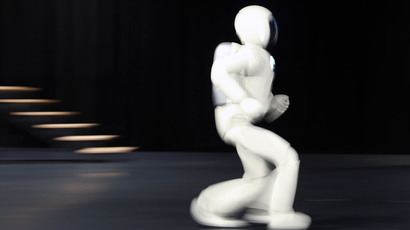New origami-style robot can assemble itself, walk

“Robots in disguise” might not be a phrase reserved for the fantasy world of 'Transformers' in the near future, as scientists have developed a new kind of robot that can assemble itself out of a flat sheet of material.
Inspired by origami, the Japanese art of paper folding, a team of researchers from Harvard and the Massachusetts Institute of Technology designed a robot that starts off as a flat sheet, only to transform itself into a spider-like machine that can crawl away on its own – at a speed of about 5.4 centimeters per second.
According to The Telegraph, the team has previously built a printed robotic worm, as well as a self-folding lamp, but this breakthrough marks the first time that a robot can put itself together and then go on to carry out a function without the input of a human.
Although the spider-bot currently runs on a timer, the team behind it is confident that it can implement heat sensors or some other kind of environmentally sensitive technology to ensure that future versions react to climate variables like temperature or pressure.
Here’s how it works: the sheet you see in the video is composed of multiple layers of paper, plastic sheets that can shrink, and a malleable circuit board, as noted by The New York Times. When the robot wants to begin folding its parts, a microcontroller tells the various circuits to heat up and shrink the material surrounding the circuit board, causing it to fold. After the material cools down again, it hardens and allows the robot to walk.
Following the successful completion of the robot, the team is already hoping that its work will pave the way for even more complex robots in the future, some of which will even be able to go into space
"Imagine a ream of dozens of robotic satellites sandwiched together so that they could be sent up to space and then assemble themselves remotely once they get there–they could take images, collect data, and more," said Sam Felton of Harvard University, the lead author of the report on the robot, which was published in the Science journal.
Less interesting – but equally important – is what future robots could do in terms of storage and cost control. Since they essentially lay flat, these machines would be far easier to store and transport, cutting costs at the same time.
“This approach opens up possibilities for making robots that can be efficiently transported or perhaps used in a dangerous search and rescue mission where access to the site may be limited,” Science journal senior editor Mark Lavine said at a press conference, as quoted by Newsweek.
In addition to launching projects into space, Harvard professor Dr. Rob Wood told the Guardian that, ultimately, the goal is to work towards a future in which people could walk into a facility and request a robot that could transform into something capable of helping with household chores like sweeping and identifying gas leaks.














